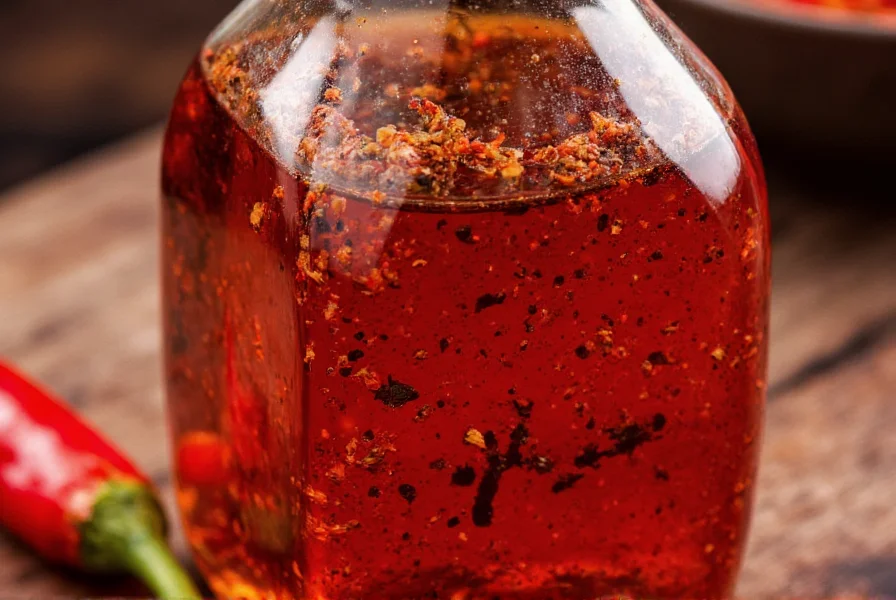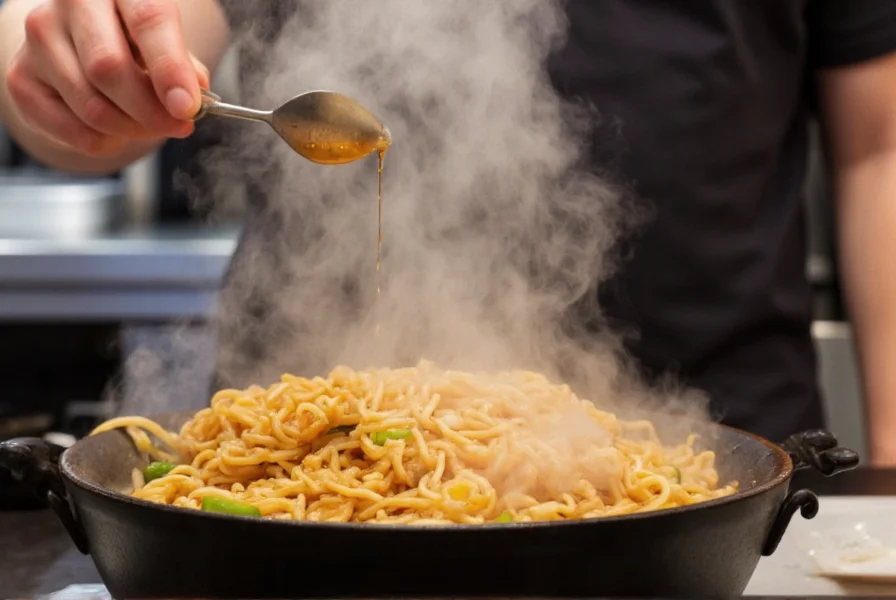For centuries, chili oil has been a cornerstone of Chinese culinary tradition, particularly in Sichuan and Hunan provinces where bold, spicy flavors dominate the regional cuisine. Unlike Western hot sauces that rely primarily on vinegar, authentic chili oil derives its complex heat profile from carefully selected dried chilies steeped in hot oil—a technique that extracts maximum flavor while preserving the peppers' natural oils and aromatic compounds.
Historical Origins and Cultural Significance
The history of chili oil traces back to the Ming Dynasty (1368-1644) when chili peppers were first introduced to China from the Americas. Initially used medicinally, chilies quickly became integrated into regional cuisines, particularly in central and western China where the humid climate made spicy foods desirable for their warming properties. Sichuan province developed the most sophisticated chili oil traditions, incorporating local ingredients like Sichuan peppercorns that create the distinctive ma la (numbing-spicy) sensation.
Traditional Chinese apothecaries recognized early on that chili oil offered more than just heat—it improved circulation and helped combat dampness in the body according to Traditional Chinese Medicine principles. This dual role as both culinary ingredient and healthful preparation cemented its place in Chinese households.
Core Ingredients and Regional Variations
While the basic what is chili oil made of formula remains consistent—chili peppers and oil—regional variations create dramatically different flavor profiles:
| Region | Key Ingredients | Flavor Profile |
|---|---|---|
| Sichuan | Facing Heaven chilies, Sichuan peppercorns, garlic | Complex heat with distinctive numbing sensation |
| Hunan | Fragrant chilies, shallots, fermented black beans | Bright, direct heat with earthy undertones |
| Shanghai | Milder chilies, scallions, sesame oil | Subtle heat with aromatic complexity |
The specific chili varieties used dramatically affect the final product. Chinese chefs typically select from dozens of regional chili types, each contributing different heat levels (measured in Scoville units) and flavor notes—from the smoky depth of Er Jing Tiao chilies to the floral notes ofFacing Heaven peppers.

Traditional Preparation Methods
Authentic spicy chili oil preparation involves a precise temperature-controlled process that maximizes flavor extraction while preventing bitterness:
- Dry toasting whole chilies to enhance aroma without burning
- Grinding to optimal particle size (too fine creates bitterness, too coarse reduces infusion)
- Heating oil to precise temperature (typically 160-180°C/320-356°F)
- Slow infusion of chili flakes with optional aromatics like garlic or ginger
- Cooling and resting for 24-48 hours to develop complex flavors
This careful process explains why commercial products often differ significantly from homemade versions. Mass-produced chili oils frequently use chemical extracts or artificial flavors to accelerate production, sacrificing the nuanced flavor development of traditional methods.
Chili Oil vs. Similar Condiments
Many people confuse chili oil with related products, but key differences exist:
- Chili oil vs chili crisp: Chili crisp contains larger solid ingredients (chili pieces, garlic, shallots) suspended in oil, creating a crunchy texture, while traditional chili oil is primarily infused oil with minimal solids
- Chili oil vs hot sauce: Hot sauces typically contain vinegar as a primary ingredient, creating a brighter, sharper heat profile compared to the rounded, oil-based heat of chili oil
- Chili oil vs chili paste: Pastes have minimal oil content and higher concentration of chili solids, making them thicker and more intense
Culinary Applications and Usage Tips
Understanding how to use chili oil in cooking properly elevates dishes without overwhelming them:
- Finishing touch: Add just before serving to preserve volatile aromatic compounds
- Dressing base: Combine with soy sauce, rice vinegar, and sesame oil for instant dipping sauce
- Marinade component: Helps carry flavors into proteins while adding subtle heat
- Stir-fry enhancer: Add during final stages of cooking to prevent burning
- Simple upgrades: A few drops transform soups, noodles, eggs, or even avocado toast
Chefs recommend starting with small amounts (1/4 to 1/2 teaspoon per serving) and adjusting to taste, as the heat builds gradually. Unlike vinegar-based hot sauces, chili oil's heat integrates more seamlessly with other ingredients.

Storage and Shelf Life Considerations
Proper storage maintains chili oil's quality and safety:
- Store in airtight container away from light and heat
- Refrigeration extends shelf life to 6-12 months (prevents rancidity)
- Homemade versions without preservatives should be consumed within 1 month
- Discard if oil develops off odors, mold, or unusual cloudiness
The presence of garlic or other fresh ingredients significantly reduces shelf life due to botulism risk. Commercial products address this through acidification or preservatives, but homemade versions with fresh aromatics should always be refrigerated and consumed quickly.
Health Considerations and Benefits
When evaluating health benefits of chili oil, research shows potential advantages:
- Capsaicin content may boost metabolism and support weight management
- Anti-inflammatory properties associated with regular chili consumption
- Improved circulation from the vasodilating effects of capsaicin
- Antioxidant properties from chili peppers' carotenoid content
However, excessive consumption may cause digestive discomfort for sensitive individuals. Those with GERD or ulcers should moderate intake. The oil base contributes significant calories, so portion control matters for those monitoring fat intake.
Selecting Quality Products
When choosing among best chili oil brands or evaluating homemade versions, consider these quality indicators:
- Bright, consistent red color (dull or brownish indicates oxidation)
- Clear separation of oil and solids (cloudiness suggests improper straining)
- Complex aroma with no rancid or burnt notes
- Gradual heat development rather than immediate harsh burn
- Visible chili flakes of consistent size (indicates careful processing)
Reading ingredient labels helps identify quality products—fewer ingredients typically indicate more traditional preparation. Avoid products listing "natural flavors," "spice extracts," or excessive preservatives, which often signal compromised quality.
Creating Your Own Homemade Version
For those interested in a homemade chili oil recipe, follow these professional tips:
- Use high smoke-point oils like peanut, sunflower, or avocado oil
- Toast whole dried chilies in dry pan until fragrant but not blackened
- Grind to coarse consistency (like kosher salt) for optimal infusion
- Heat oil to 160°C (320°F), then cool slightly before adding chilies
- Infuse in stages—first with aromatics, then with chili flakes
- Strain through cheesecloth for clear, sediment-free oil
The resting period after preparation is crucial—allowing the oil to sit for 24-48 hours lets flavors fully develop and integrate. Properly made homemade chili oil will have layered heat that builds gradually rather than an immediate, one-dimensional burn.
Global Adaptations and Modern Interpretations
As chili oil has gained international popularity, creative adaptations have emerged:
- Japanese rayu often includes sesame seeds and ginger
- Korean versions incorporate gochugaru (Korean chili powder) for distinctive flavor
- Western interpretations sometimes add herbs like oregano or thyme
- Gourmet versions use infused oils (truffle, smoked paprika) as base
These adaptations demonstrate chili oil's remarkable versatility while maintaining its essential character as a heat-infused oil condiment. The fundamental what is chili oil concept remains consistent across cultures—a simple yet transformative way to add depth and spice to countless dishes.
What's the difference between chili oil and chili crisp?
Chili oil is primarily infused oil with minimal solids, while chili crisp contains larger pieces of chili, garlic, and other ingredients suspended in oil, creating a crunchy texture. Chili crisp is thicker and more substantial, often eaten as a condiment by itself, whereas chili oil is typically used as a finishing oil or ingredient.
How long does homemade chili oil last?
Properly made homemade chili oil without fresh ingredients lasts 3-6 months when stored in an airtight container in the refrigerator. If you've added fresh garlic, ginger, or other perishables, consume within 1 month due to potential botulism risk. Always check for off odors, mold, or cloudiness before using.
Can I make chili oil without frying?
Yes, you can make raw chili oil by steeping dried chili flakes in room-temperature oil for several weeks, but the flavor profile will differ significantly. The traditional frying method develops deeper, more complex flavors through the Maillard reaction and proper extraction of capsaicin. Raw versions tend to have a grassier, less rounded heat profile.
Why does my chili oil separate?
Separation is normal and expected in authentic chili oil, as it contains no emulsifiers. The chili sediment settles at the bottom while the clear oil rises to the top. This indicates a traditionally made product. Simply shake or stir before use. Commercial products that don't separate often contain stabilizers or thickeners.
Is chili oil healthy?
In moderation, chili oil offers potential health benefits from capsaicin, including improved metabolism and anti-inflammatory effects. However, it's high in calories from the oil base. Quality matters—choose versions with simple ingredients and avoid those with excessive preservatives or artificial flavors for the most healthful option.











 浙公网安备
33010002000092号
浙公网安备
33010002000092号 浙B2-20120091-4
浙B2-20120091-4